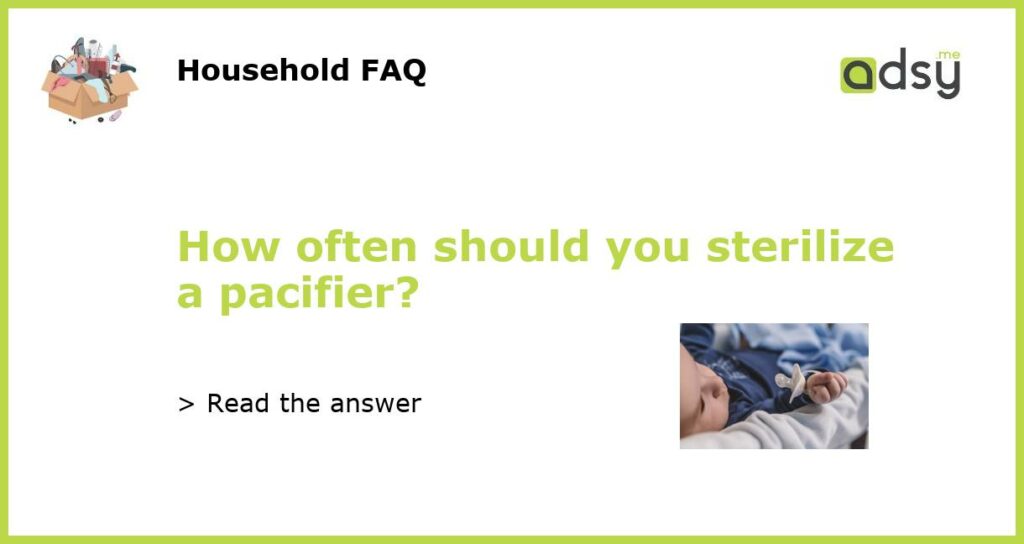How Often Should You Sterilize a Pacifier?
As a parent, you want to do everything you can to keep your baby healthy and safe. One common question that many parents have is how often they should sterilize their baby’s pacifier. Pacifiers are not only a source of comfort for babies, but they can also harbor bacteria and germs if not properly cleaned. In this article, we will discuss the importance of sterilizing pacifiers, when it is necessary to do so, and how to properly clean them to ensure your baby’s health.
The Importance of Sterilizing Pacifiers
Pacifiers are a breeding ground for bacteria and germs because they come into contact with your baby’s mouth. Babies have immature immune systems, making them more susceptible to infections. By sterilizing pacifiers, you can kill off any harmful bacteria and reduce the risk of your baby developing illnesses such as ear infections, respiratory infections, and stomach bugs. Regularly sterilizing pacifiers can help protect your baby’s health and well-being.
When to Sterilize Pacifiers
It is important to sterilize pacifiers before they are used for the first time, as they may come into contact with dirt, dust, and germs during manufacturing and transportation. To sterilize a new pacifier, boil it in water for five minutes and allow it to cool before giving it to your baby. After the initial sterilization, you should continue to sterilize pacifiers regularly. A good rule of thumb is to sterilize pacifiers at least once a day, and especially after they have been dropped on the floor or come into contact with any dirt or unclean surfaces.
Proper Cleaning Techniques
In addition to regular sterilization, it is also important to clean pacifiers properly on a day-to-day basis. After each use, rinse the pacifier under running water to remove any milk residue or saliva. You can also use mild soap to clean the pacifier, but make sure to rinse it thoroughly to remove any soap residue. Avoid using harsh chemicals or abrasives, as these can damage the pacifier. Once cleaned, store the pacifier in a clean, dry container until it is needed again.
Additional Tips for Pacifier Safety
In addition to sterilizing and cleaning pacifiers, there are a few other tips to keep in mind to ensure your baby’s safety. First, check the pacifier regularly for signs of wear and tear, such as cracks, tears, or loose parts. If you notice any damage, replace the pacifier immediately. Second, avoid sharing pacifiers between babies, as this can spread germs and bacteria. Finally, try to wean your baby off the pacifier by the age of two to three years, as prolonged pacifier use can affect your child’s dental health.






